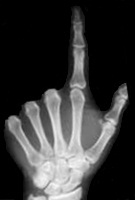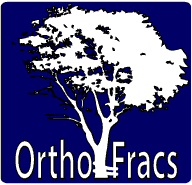Journal Club
April 2010
Reduction of Acute Anterior Dislocations: A Prospective Randomised Study Comparing a New Technique with the Hippocratic and Kocher Methods
- Authors:Fares E. Sayegh, Eustathios I. Kenanidis, Kyriakos A. Papavasiliou, Michael E. Potoupnis, John M. Kirkos, George A. Kapetanos
- Institution: Third Orthopaedic Department, Aristotle University of Thessaloniki Medical School,‘‘Papageorgiou’’ General Hospital, Thessaloniki, Greece
- Journal: J Bone Joint Surg Am. 2009;91:2775-82
Reviewed by
Dr Terry Stephens
BSc(hons), MBBS, PhD |
Unaccredited Orthopaedic Registrar
Introduction
- Aim of reducing anterior dislocations
- Effective, quick, safe, easy, relatively painless.
- Minimal literature comparing different techniques
- Study Aim
- To introduce a new technique
- And compare objectively with the hippocratic and kocher technique
Methodology
- Prospective randomised study
- Exclusion criteria
- Three or four part prox humerus #
- Greater than 24hours dislocated
- Intoxication
- Analgesics or muscle relaxants.
- Three or four part prox humerus #
- 3 orthopaedic residents
- Max of 2 attempts = failure = GA in theatre
- No sedation or analgesia given
- End Points
- Successful reduction
- Time to reduction
- Pain score (Visual analog scale)
- 0 = no pain
- 10 = intolerable pain
- 0 = no pain
- Reduction Methods
- FARES (Fast, Reliable &Safe)
- Gentle traction arm in neutral
- Continuous vertical oscillations
- Arm abducted
- 90 degrees arm externally rotated.
- Reduction achieved around 120 degree
- Gentle traction arm in neutral
- Hippocratic
- Downward traction applied
- Counter traction with a sheet wrapped around the axilla
- Slight rotational movements
- Downward traction applied
- Kocher
- Elbow flexed at 90 degrees adducted against side.
- Arm externally rotated
- Then flexed
- Then internally rotate the arm
- Elbow flexed at 90 degrees adducted against side.
- FARES (Fast, Reliable &Safe)
Results
- Successful Reductions (p=.033)
- FARES - 88.7%
- Hippocratic - 72.5%
- Kocher - 68%
- FARES - 88.7%
- Unsuccessful went to theatre
- FARES – 11.3%
- Hippocratic – 27.5%
- Kocher 32%
- FARES – 11.3%
- All 1st attempt
- FARES = 15, Hippocratic = 9, Kocher = 8, Milch = 4
- FARES = 15, Hippocratic = 9, Kocher = 8, Milch = 4
- Reduction Time (min) (p<0.001)
- FARES – 2.36 +/- 1.24
- Hippocratic – 5.55 +/- 1.58
- Kocher – 4.32 +/- 2.12
- FARES – 2.36 +/- 1.24
- Results
- VAS pain score out of 10 (p<0.001)
- FARES – 1.57 +/- 1.43
- Hippocratic – 4.88 +/- 2.17
- Kocher – 5.44 +/- 1.92
- FARES – 1.57 +/- 1.43
- VAS pain score out of 10 (p<0.001)
Discussion
- Increased efficacy
- Decreased time to reduction
- Less pain
Pros of Study
- Randomisation
- Inexperienced users
- Homogenous groups
- Standardised protocol
Cons of Study
- Inexperienced practitioners
- If experienced using other technique improved efficacy?
- No sedation
- Other results applicable to these techniques only.
- Single blinded (impossible to double blind)
Consultant Discussion
- It's interesting that this technique has been used also for many years in Australia. At least 30 years.
- It is often used to reduce shoulders on sporting fields eg. AFL, rugby
Take home message
FARES technique
- Fast
- Reliable
- Safe
Good for inexperienced Doctors.
Discussion points
- Irrespective of technique used it is critical to have the patient relax. If this is achieved technique is not so important.
- Therefore relaxation and use technique most familiar.
Webpage Last Modified:
10 November, 2010



